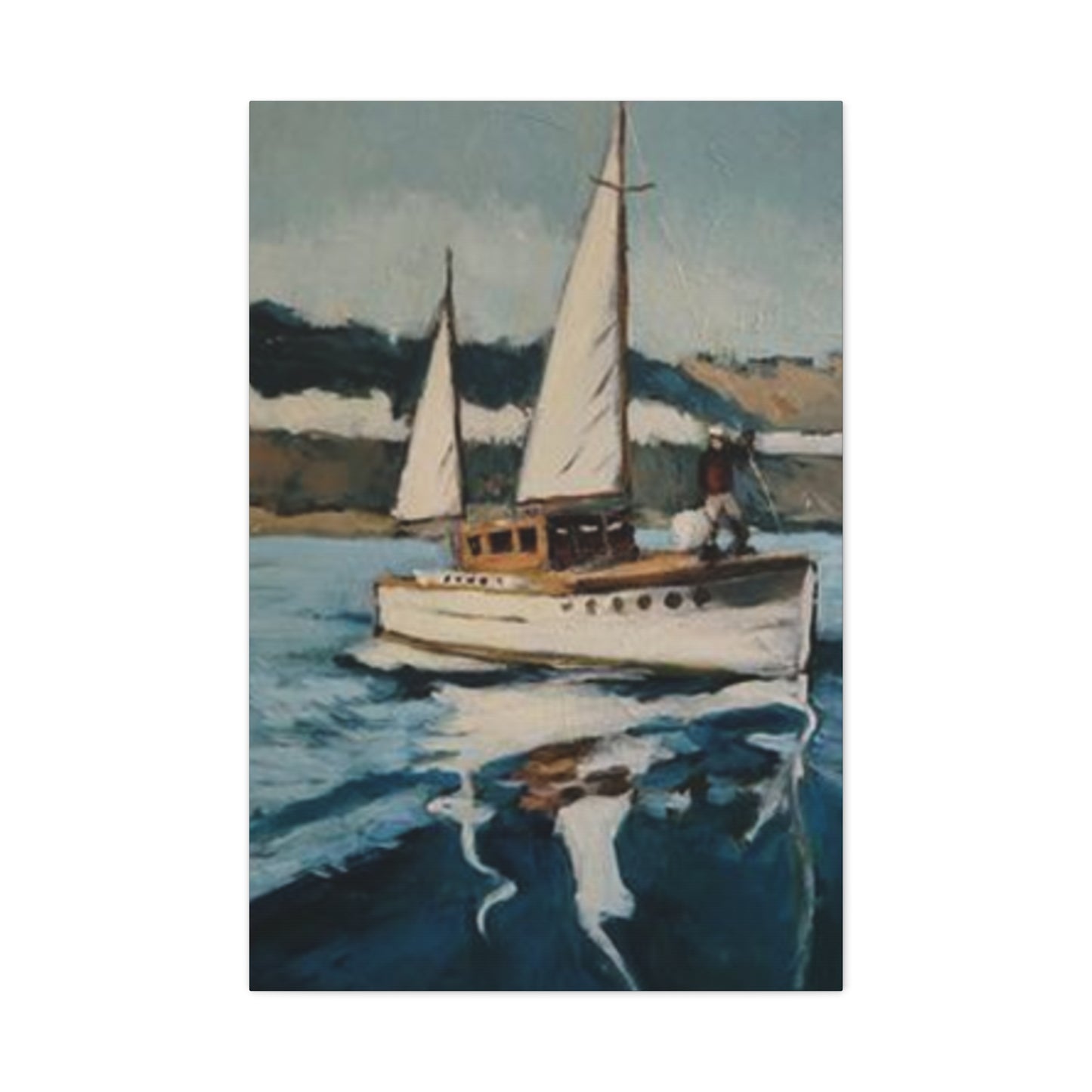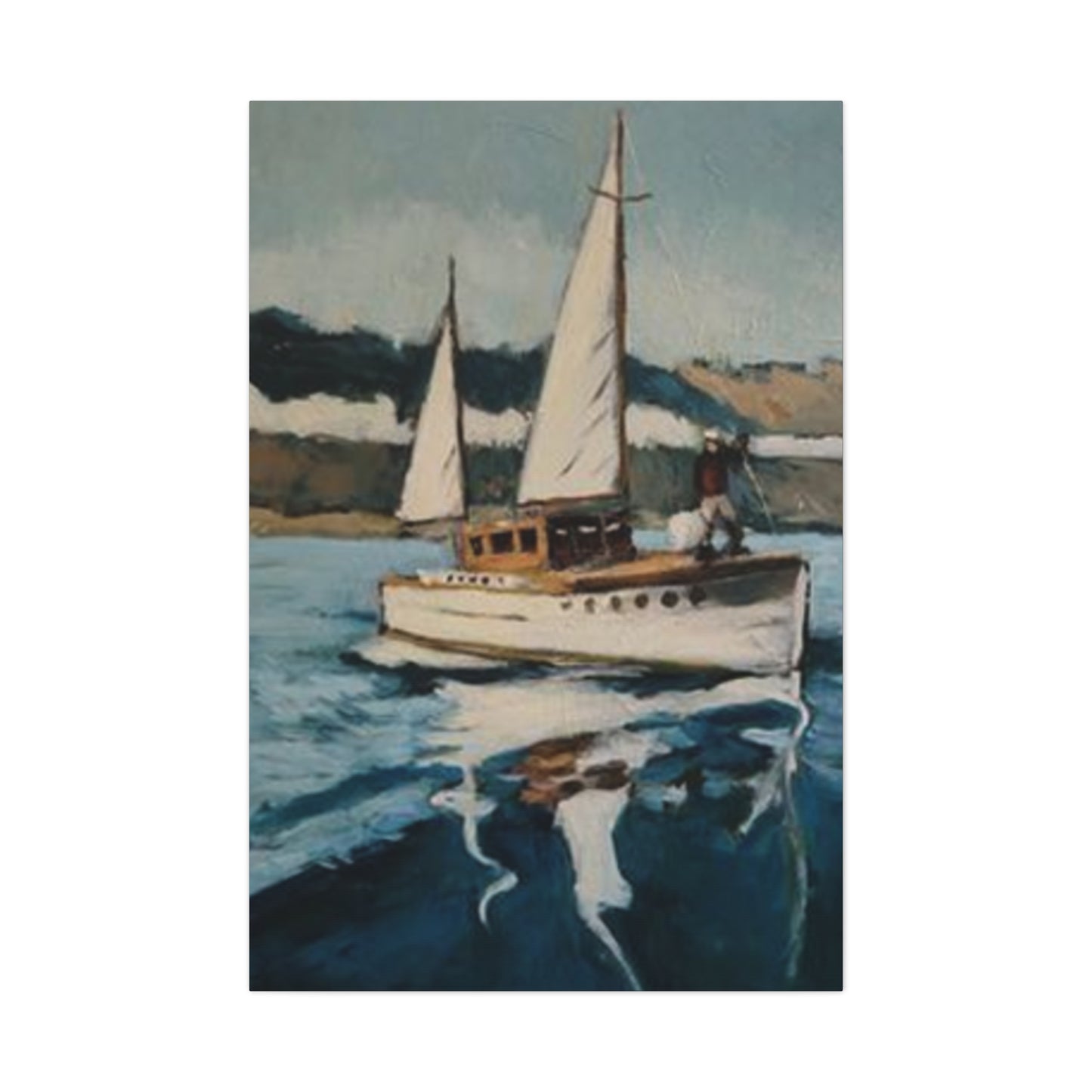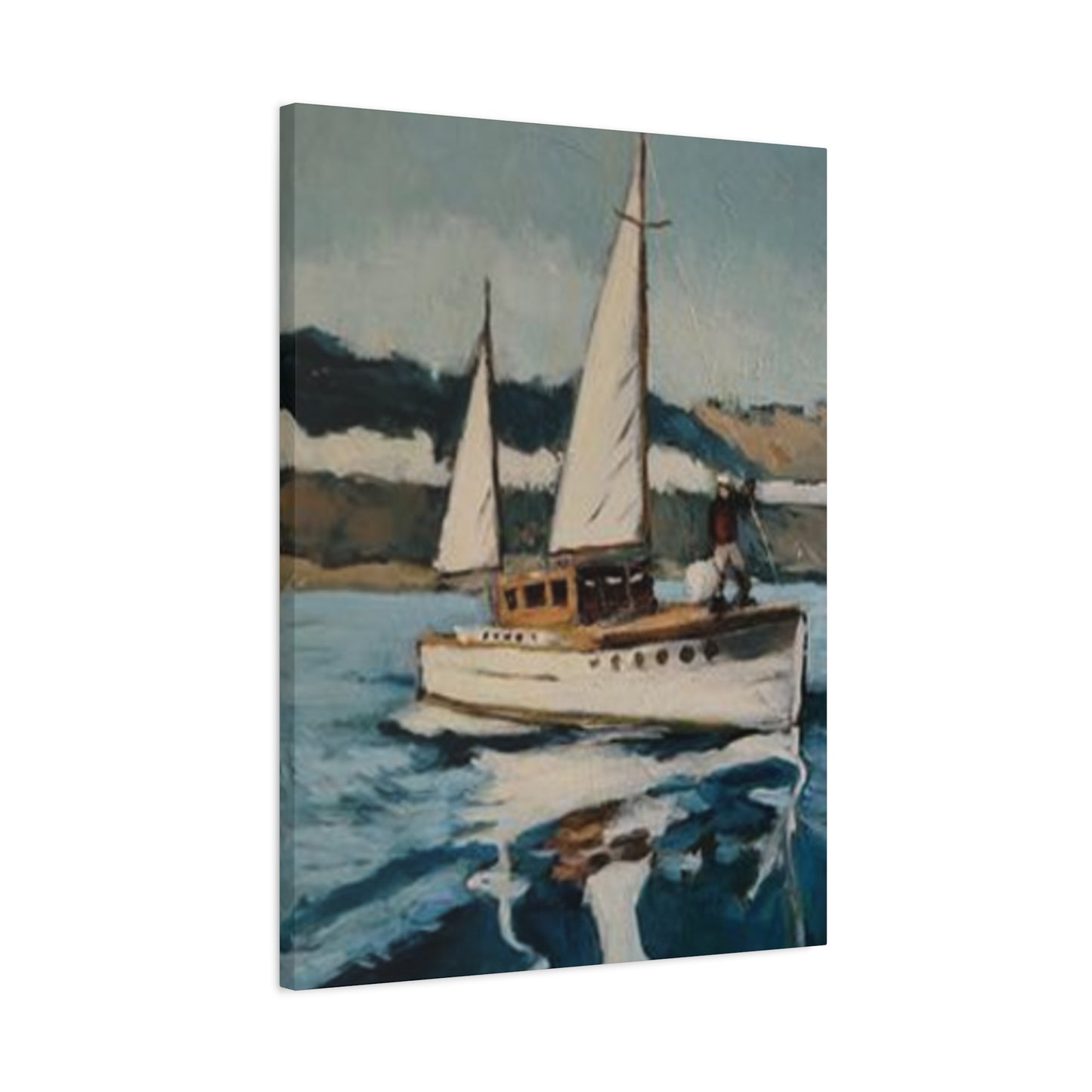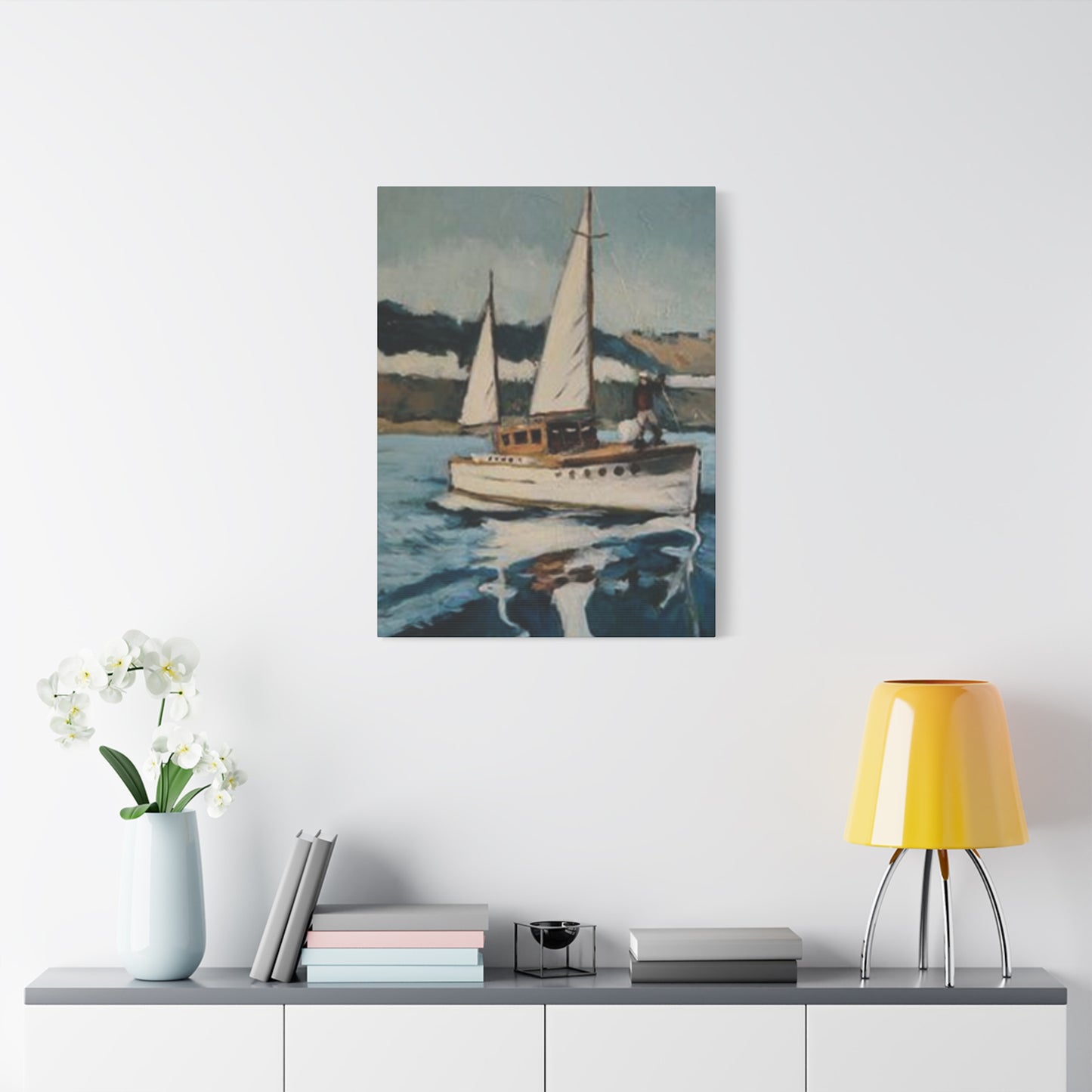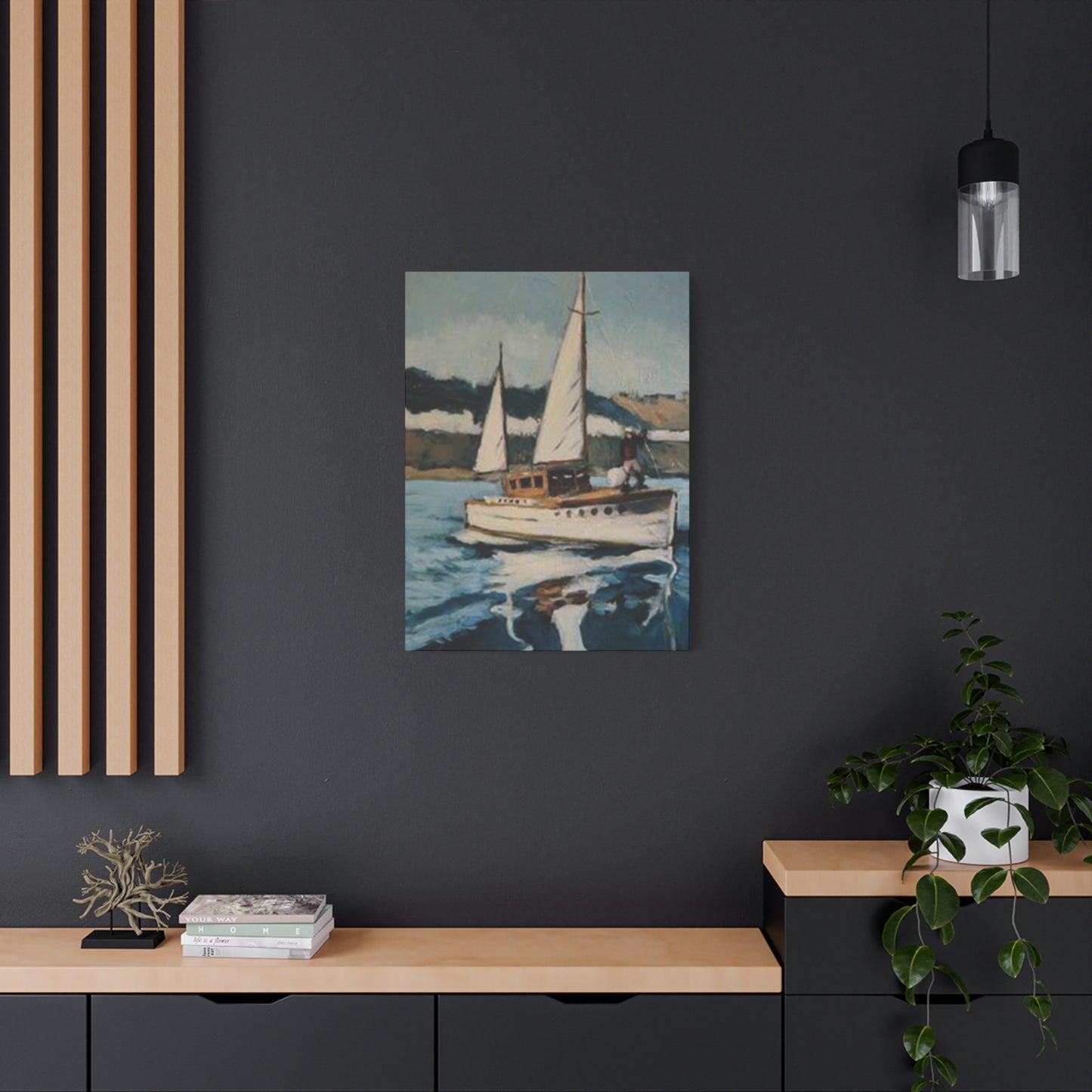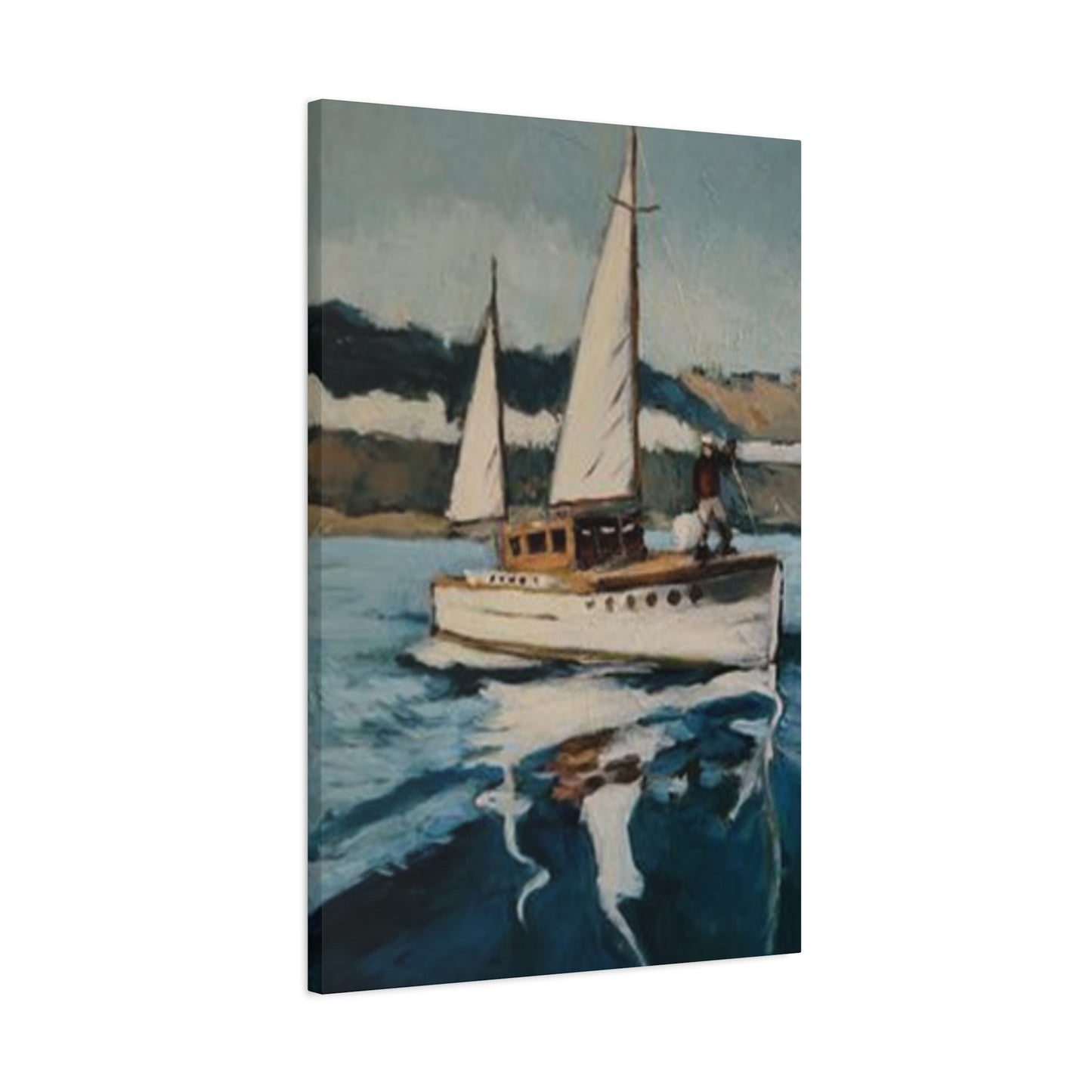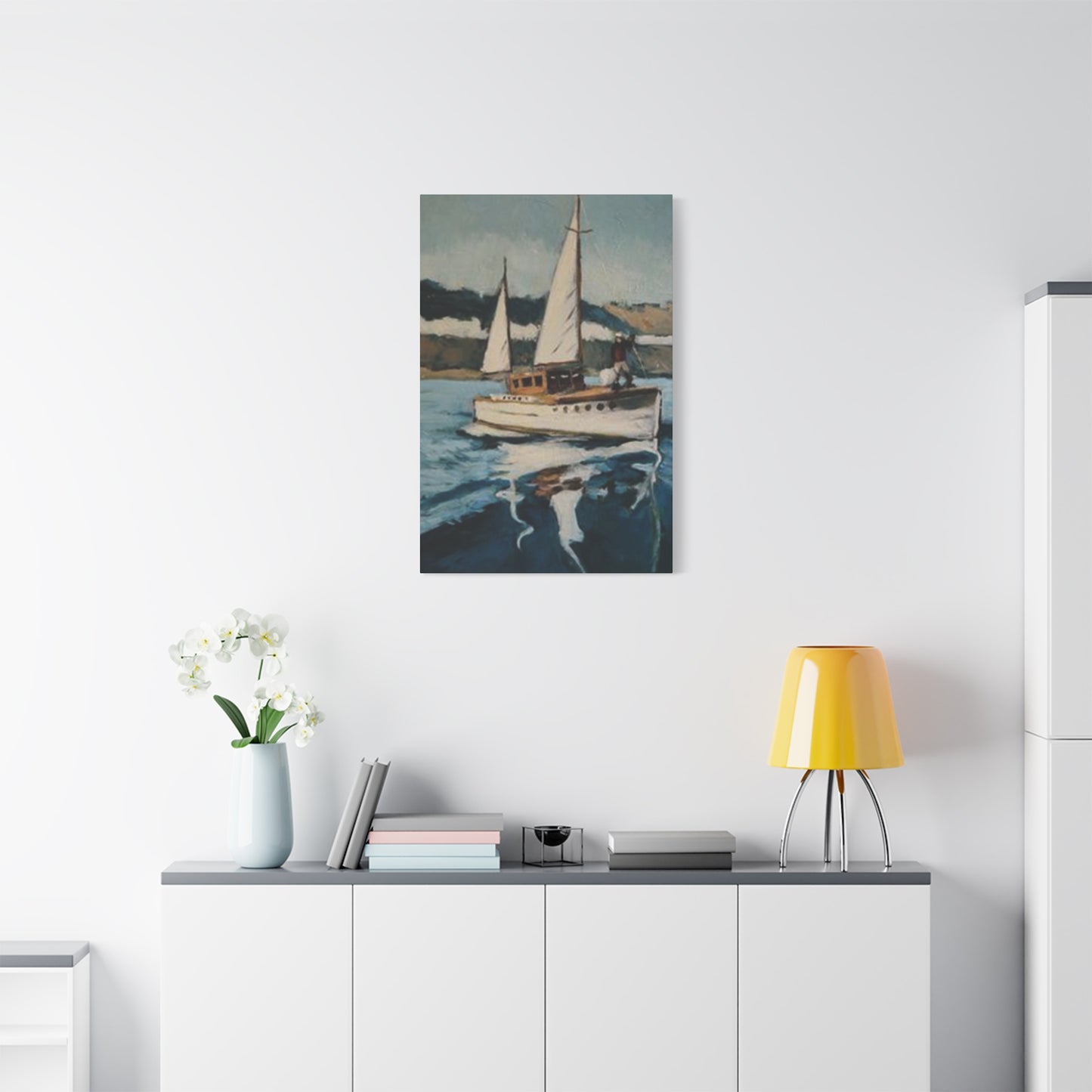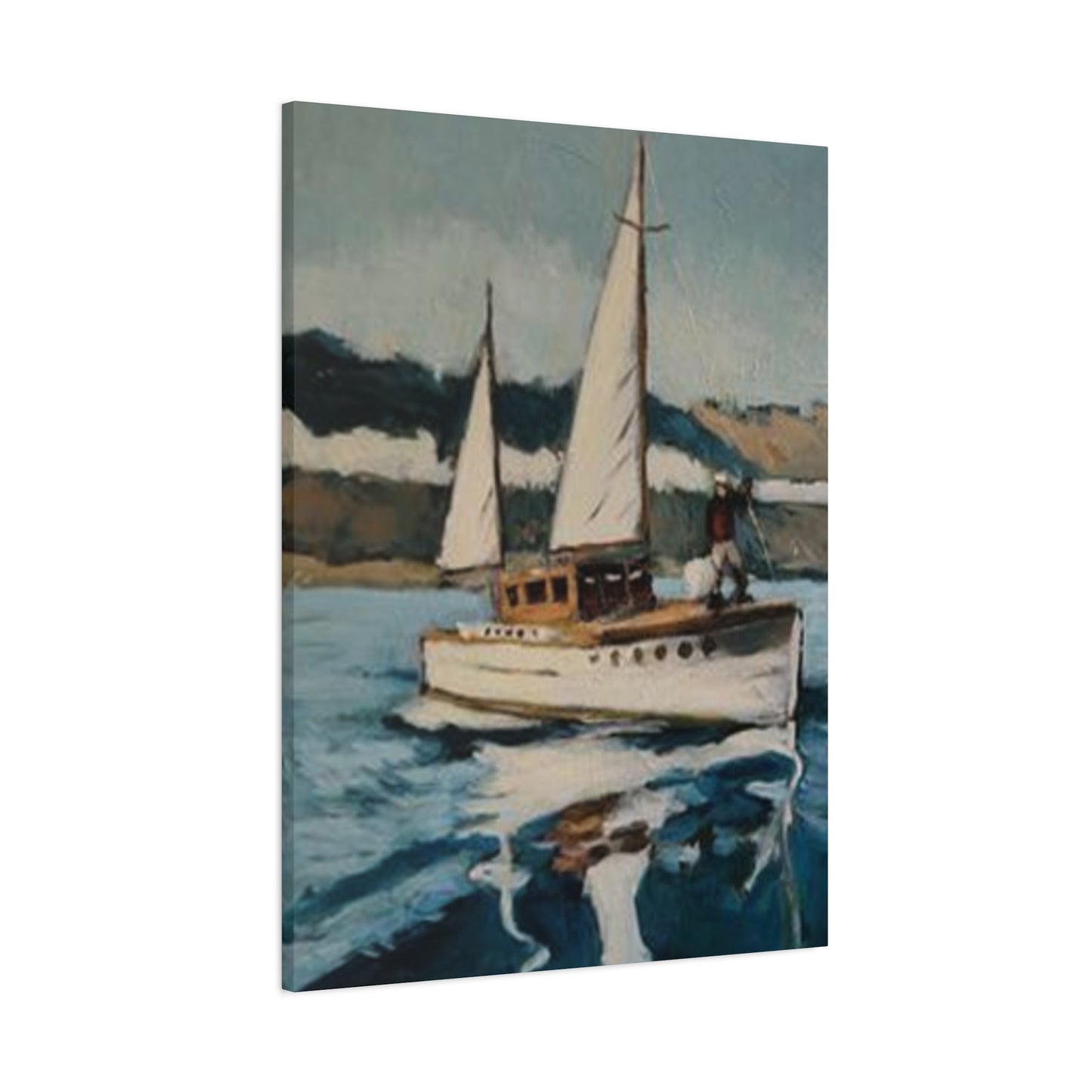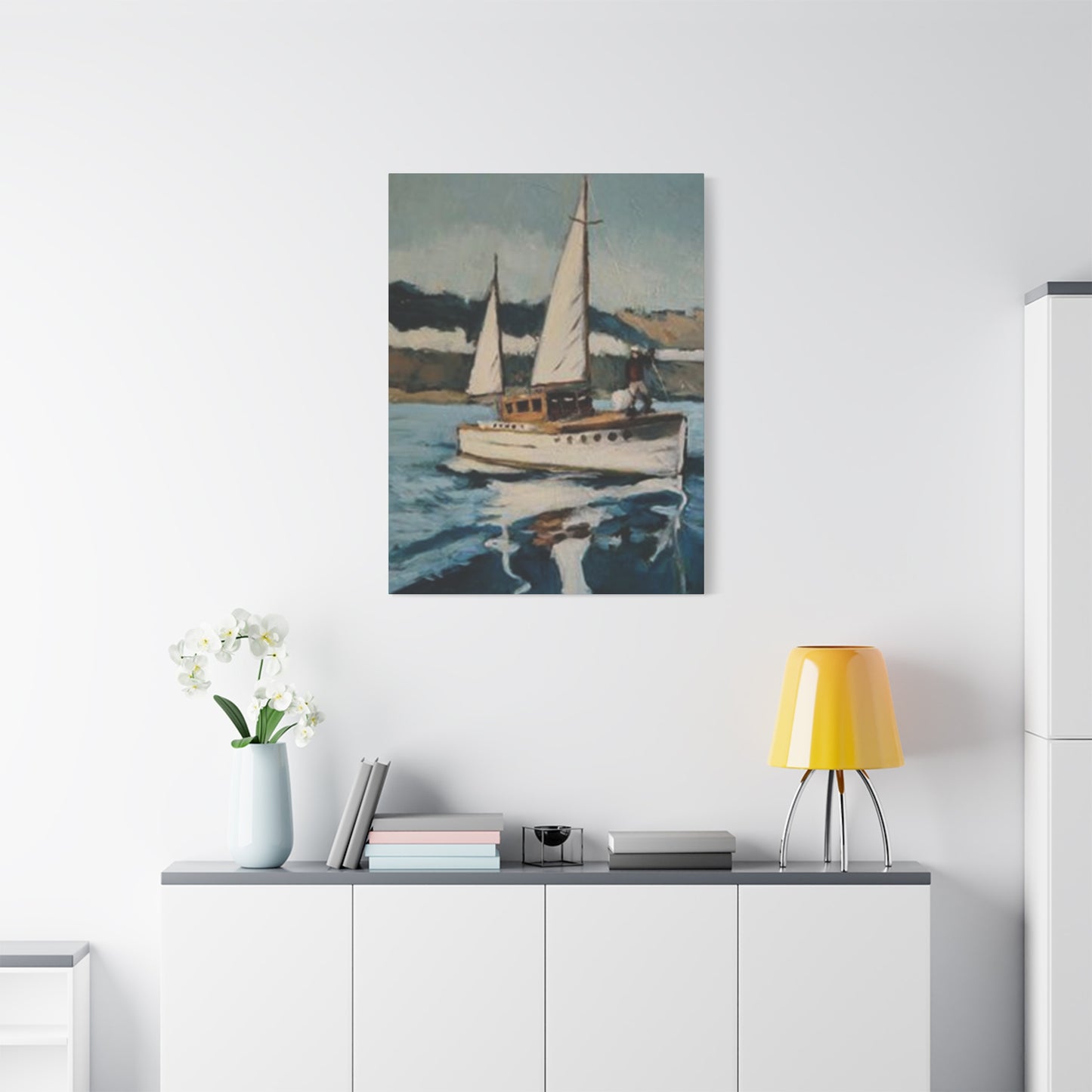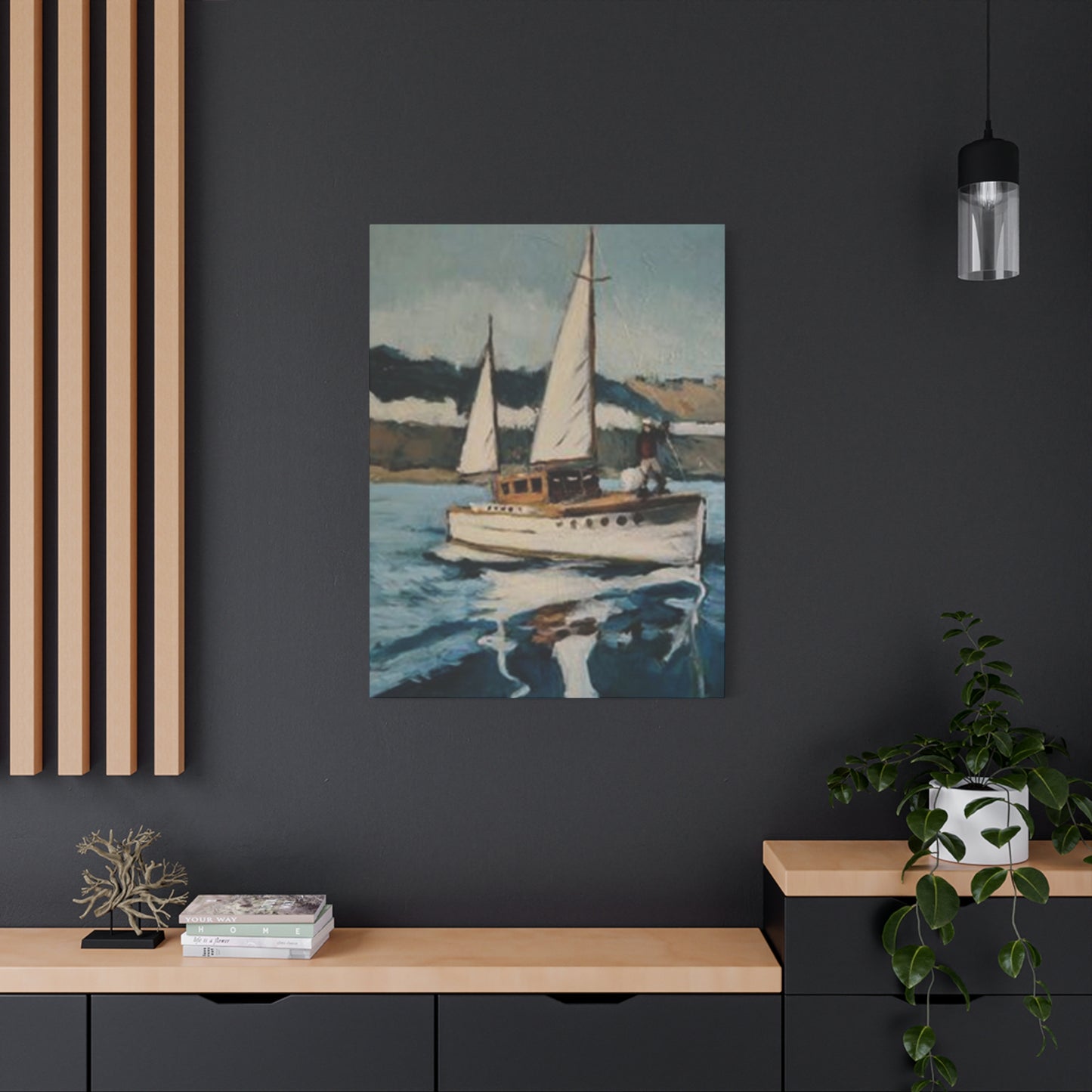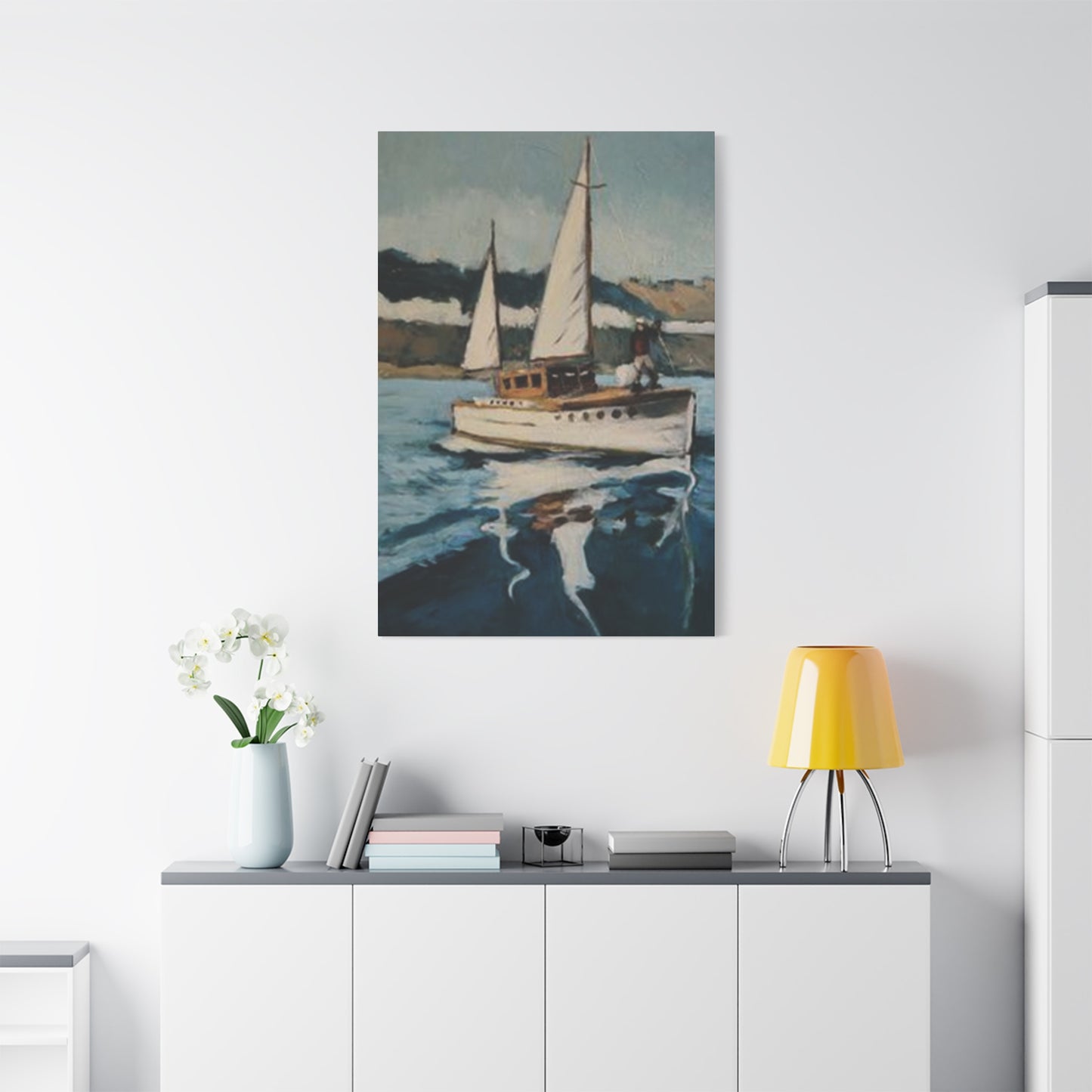The Ultimate Guide to White Sailing Ship Poster Wall Art: Combining Art and Adventure
The allure of maritime imagery has captivated interior design enthusiasts for generations, and white sailing ship poster wall art represents one of the most elegant expressions of this timeless aesthetic. These stunning visual pieces bring the romance of the open seas into residential and commercial spaces, creating atmospheres that evoke adventure, tranquility, and sophistication. The pristine beauty of white-sailed vessels against various backdrops offers versatility that complements countless design schemes while maintaining a classic appeal that transcends fleeting trends.
Maritime wall art featuring white sailing ships serves multiple purposes beyond mere decoration. These pieces act as conversation starters, mood enhancers, and architectural elements that can dramatically transform the character of any room. Whether displayed in coastal homes, urban apartments, corporate offices, or hospitality venues, white sailing ship posters create visual anchors that draw the eye and inspire contemplation. The symbolic associations of sailing vessels—freedom, exploration, journey, and resilience—add layers of meaning that resonate with viewers on psychological and emotional levels.
The popularity of white sailing ship wall art stems from its remarkable adaptability across design styles. From minimalist Scandinavian interiors to maximalist eclectic spaces, from traditional nautical themes to contemporary coastal chic, these artworks integrate seamlessly while maintaining their distinctive character. The neutral color palette of white sails allows for easy coordination with existing color schemes, while the dynamic forms of ships under sail introduce movement and energy to static wall spaces. This combination of visual impact and design flexibility explains why maritime posters featuring white sailing ships remain perennial favorites among decorators and homeowners alike.
Creating Coastal Ambiance Through Maritime Imagery
Establishing a coastal atmosphere within interior spaces requires careful selection of decorative elements that evoke seaside environments without resorting to clichéd motifs. White sailing ship poster wall art achieves this balance by referencing maritime heritage through sophisticated visual representation. These artworks capture the essence of coastal living—the interplay of light on water, the drama of billowing sails, the vastness of horizons—while maintaining artistic integrity that elevates them beyond simple nautical decoration.
The psychological impact of coastal imagery extends beyond aesthetic appreciation. Research in environmental psychology demonstrates that nature-inspired artwork, particularly maritime scenes, can reduce stress levels and promote mental well-being. White sailing ships gliding across calm waters create feelings of serenity and escape, providing visual respite from the demands of daily life. The horizontal lines of seascapes naturally encourage eye movement across the composition, a viewing pattern associated with relaxation and contemplation. This therapeutic quality makes white sailing ship posters particularly valuable in spaces designed for rest, reflection, or creative work.
Integrating maritime wall art into coastal-themed interiors requires understanding the relationship between artwork and surrounding design elements. White sailing ship posters work synergistically with natural materials common in coastal design—weathered wood, linen fabrics, jute rugs, and rattan furniture. The crisp whites of the sails echo the brightness of sun-bleached driftwood and whitewashed walls, while the blues and grays of sea and sky complement the cool color palettes typical of beach-inspired spaces. This chromatic harmony creates cohesive environments where artwork and furnishings reinforce a unified design vision.
The scale of maritime artwork significantly influences its impact within coastal interiors. Large-format white sailing ship posters can serve as dramatic focal points in spacious rooms with high ceilings, commanding attention and establishing the room's thematic direction. Conversely, smaller prints arranged in gallery configurations allow for more nuanced storytelling, with multiple images creating narrative sequences that chronicle maritime journeys or showcase different vessel types. Understanding how poster dimensions interact with room proportions ensures optimal visual balance and prevents artwork from overwhelming or underwhelming the space.
Selecting Optimal Placement for Maximum Visual Impact
Strategic positioning of white sailing ship poster wall art determines its effectiveness as both decorative element and architectural feature. The placement process involves considering sightlines, lighting conditions, surrounding furnishings, and the intended emotional impact of the space. Proper positioning ensures that artwork receives appropriate attention without competing with other design elements or creating visual clutter that diminishes its effect.
Living rooms present numerous opportunities for showcasing maritime posters. Above sofas and seating arrangements, white sailing ship artwork creates natural focal points that anchor conversation areas. The standard placement guideline positions artwork so the center sits at eye level when standing, typically between fifty-seven and sixty inches from the floor. However, when positioning art above furniture, the bottom edge should rest approximately six to eight inches above the back of the sofa, maintaining visual connection between the pieces while providing breathing room. This placement ensures comfortable viewing from both standing and seated positions while integrating the artwork with the furniture grouping.
Dining areas benefit enormously from maritime wall art that encourages contemplation and conversation. White sailing ship posters positioned on walls adjacent to or behind dining tables create sophisticated backdrops for meals and gatherings. The imagery provides visual interest without demanding constant attention, allowing it to enhance the atmosphere while remaining subtle enough not to distract from social interactions. In formal dining rooms, larger statement pieces can establish elegant ambiance, while casual eating spaces might feature smaller prints or collections that add personality without formality.
Bedroom environments offer unique opportunities for maritime artwork that promotes relaxation and restful sleep. White sailing ship posters positioned on walls facing the bed provide pleasing views upon waking and retiring, with their calming imagery supporting healthy sleep patterns. The cool color palettes typical of maritime art align with recommendations for bedroom color schemes, which favor soothing hues that encourage relaxation. Behind-the-bed placement creates impressive headboard alternatives, particularly when artwork spans significant width, while side-wall positioning adds interest to otherwise neglected wall space.
Complementary Color Schemes for Maritime Wall Art
Developing color palettes that enhance white sailing ship poster wall art requires understanding color theory principles and the emotional associations of different hues. The neutrality of white sails provides flexibility for surrounding color choices, but thoughtful coordination creates harmonious environments where artwork and decor reinforce unified aesthetic visions.
Classic nautical color schemes featuring navy blue and white create timeless environments that honor maritime heritage. Deep navy walls provide dramatic backdrops that make white sailing ships appear luminous and three-dimensional, creating striking contrast that commands attention. This high-contrast approach works particularly well in rooms with abundant natural light, where the interplay between dark walls and bright artwork creates dynamic visual interest. Incorporating crisp white trim, furniture, and accessories prevents navy from overwhelming spaces while maintaining the clean, fresh feeling associated with maritime environments.
Soft gray palettes offer sophisticated alternatives to traditional nautical colors while maintaining coastal sensibility. Light to medium grays create subtle backgrounds that allow white sailing ship artwork to shine without stark contrast. These neutral schemes provide calm, contemplative atmospheres particularly suited to bedrooms, studies, and meditation spaces. Layering various gray tones throughout the room—from pale silvery grays on walls to charcoal accents in textiles—adds depth and dimension while maintaining monochromatic harmony. The resulting environments feel serene and refined, with maritime artwork providing visual anchors without overwhelming the peaceful ambiance.
Coastal color palettes incorporating soft blues and aquas create breezy, relaxed atmospheres reminiscent of tropical waters and clear skies. These lighter blue tones complement white sailing ship posters while maintaining airiness and openness in interior spaces. The psychological associations of light blue—calm, peace, expansiveness—enhance the stress-reducing qualities of maritime imagery. Combining various blue shades from powder to periwinkle creates tonal variation that prevents monotony while staying within a cohesive color family. White and natural wood accents prevent blue schemes from feeling cold, adding warmth and textural contrast.
Warm neutral schemes featuring beige, taupe, and sand tones create sophisticated coastal environments with unexpected depth. These earthy neutrals reference beaches and dunes while providing warm, inviting backdrops for white sailing ship artwork. The combination of cool maritime imagery with warm neutral surroundings creates balanced environments that feel both refreshing and comfortable. This approach particularly suits homes in cooler climates where purely cool color schemes might feel uninviting during winter months. Incorporating natural textures like sisal, jute, and weathered wood reinforces the organic quality of warm neutral palettes.
Framing Options That Enhance Maritime Artwork
Traditional wood frames remain popular choices for maritime posters, offering warmth and classical elegance. Natural wood tones from light oak to rich walnut create organic connections between artwork and natural elements common in coastal design. Wood frames with visible grain patterns add textural interest that complements the organic forms of sailing ships and water, creating visual harmony between frame and content. The thickness and profile of wood frames should correspond to artwork size—substantial frames for large statement pieces, delicate profiles for smaller prints—ensuring proportional balance that neither overwhelms nor underwhelms the artwork.
White frames create seamless transitions between light-colored walls and maritime artwork, particularly effective in minimalist and Scandinavian-inspired interiors. Crisp white frames extend the brightness of sailing ship imagery, making artwork appear larger and more luminous. This approach works especially well with contemporary photography or digital illustrations featuring clean lines and simplified compositions. Matte white frames suit modern aesthetics, while distressed or weathered white frames add rustic character appropriate for shabby chic or coastal cottage styles. The uniformity of white frames allows for cohesive gallery wall arrangements where varied artwork content maintains visual unity through consistent framing.
Black frames provide sophisticated contrast for white sailing ship posters, creating defined boundaries that enhance artwork presence. The strong visual separation between frame, matting, and wall focuses attention directly on the artwork while adding contemporary refinement. Black frames work particularly well in modern and transitional interiors where clean lines and bold contrasts define the aesthetic. The formality of black framing elevates casual maritime prints, lending gallery-quality presentation to affordable poster art. This approach suits artwork featuring dramatic compositions or high-contrast images where the frame's strength matches the imagery's impact.
Metal frames offer industrial chic alternatives that complement contemporary and urban-coastal fusion styles. Sleek aluminum or steel frames in brushed nickel, bronze, or black finishes provide modern sophistication while maintaining durability. The slim profiles typical of metal frames create floating effects that emphasize artwork over framing, ideal for minimalist environments prioritizing clean lines and uncluttered presentations. Metal frames particularly suit photographic maritime prints or digital artwork, where the contemporary medium aligns with modern framing materials.
Natural materials including bamboo, rattan, and driftwood create organic frames that enhance the coastal character of maritime artwork. These textured framing options add dimensional interest and reinforce connections to natural environments. The irregular surfaces and varied tones of natural material frames complement the organic forms of sailing ships and water, creating harmonious presentations that feel authentic and unforced. This framing approach particularly suits casual coastal interiors, beach houses, and spaces emphasizing sustainable or eco-friendly design principles.
Artistic Styles in Maritime Wall Art
Photographic maritime art captures sailing vessels with documentary precision and contemporary relevance. High-quality photography preserves authentic details of rigging, sail configuration, and vessel construction, appealing to sailing enthusiasts and maritime history buffs. The realism of photographic prints creates immediate connections to actual seafaring experiences, evoking memories of time spent on water or aspirations for future adventures. Contemporary maritime photography often emphasizes dramatic lighting conditions—golden hour glow, stormy skies, or high-contrast sunlight—that transform documentary subjects into artful compositions. The technical sophistication of modern photography equipment captures stunning detail and color accuracy that rivals traditional artistic media.
Vintage maritime illustrations reference historical periods when sailing vessels dominated commerce and exploration. These nostalgic artworks feature artistic conventions of their eras, including hand-drawn details, limited color palettes, and formal compositional arrangements. Vintage-style prints appeal to collectors of antiques and those drawn to the romance of maritime history. The aged appearance of vintage illustrations—whether authentically old or reproduced with distressed effects—adds character and story to interiors, suggesting accumulated memories and cherished heirlooms. This artistic approach particularly suits traditional, eclectic, or historically inspired interior designs.
Minimalist maritime art reduces sailing ship imagery to essential forms and limited color palettes, creating contemporary expressions with powerful simplicity. These stripped-down compositions emphasize silhouettes, negative space, and geometric relationships rather than detailed rendering. The clarity and restraint of minimalist maritime art aligns with Scandinavian design principles and contemporary aesthetics that value simplicity and function. Single sailing vessels rendered against vast expanses of sea and sky create meditative images that encourage contemplation while maintaining visual impact through strategic composition rather than ornate detail.
Impressionistic maritime paintings translate sailing ships through loose brushwork and emphasis on light, atmosphere, and emotional impression over precise detail. This artistic approach captures the ephemeral qualities of seafaring—shifting light on water, movement of clouds, billowing sails filled with wind—creating dynamic, energetic compositions. The visible brushstrokes and color variations of impressionistic work add textural richness that engages viewers at multiple distances. From afar, impressionistic maritime art reads as cohesive scenes; up close, the individual marks and color applications reveal the artist's process and interpretation.
Integration with Various Interior Design Styles
White sailing ship poster wall art demonstrates remarkable versatility across diverse interior design styles, adapting to different aesthetic vocabularies while maintaining its essential character. Understanding how maritime artwork functions within various design contexts enables strategic integration that enhances rather than conflicts with established interior schemes.
Coastal contemporary style represents the natural home for white sailing ship artwork, where maritime imagery reinforces the overall design concept. This aesthetic combines beach-inspired elements with modern sensibilities, creating relaxed yet refined environments. Clean lines, natural materials, neutral color palettes with blue accents, and uncluttered spaces characterize this style. White sailing ship posters contribute authentic coastal references without resorting to kitsch, maintaining sophistication appropriate for grown-up spaces. The artwork complements natural textures like weathered wood, linen, and rope while adding visual interest to predominantly neutral schemes. Large-scale photography or minimalist illustrations align particularly well with the contemporary aspect of this hybrid style.
Scandinavian design emphasizes simplicity, functionality, and connection to nature, creating ideal contexts for minimalist maritime artwork. The Scandinavian palette of whites, grays, and natural wood tones provides perfect backdrops for white sailing ship posters, which add interest without overwhelming the restrained aesthetic. The Scandinavian appreciation for nature and outdoor life creates philosophical alignment with maritime imagery celebrating seafaring and exploration. Simple frames in white, natural wood, or light gray complement Scandinavian furniture and maintain the clean, uncluttered appearance central to this design philosophy. The artwork introduces organic forms and movement to interiors that might otherwise feel overly geometric or static.
Traditional interior design accommodates maritime artwork through formal presentations and classical framing. White sailing ship posters in traditional settings typically feature vintage illustrations or historically inspired imagery that references maritime heritage. Rich wood frames with ornate profiles, wide formal matting, and careful placement within symmetrical arrangements integrate maritime art into traditionally furnished spaces. The artwork might hang alongside other nautical elements like brass instruments, model ships, or maritime charts, creating thematic collections that suggest studied collecting rather than casual decoration. Traditional interiors in historic homes or formal settings benefit from maritime artwork that acknowledges historical contexts and classical artistic conventions.
Industrial style interiors, characterized by exposed architectural elements, raw materials, and urban aesthetics, create unexpected but effective settings for maritime artwork. The juxtaposition of refined sailing ship imagery against brick walls, concrete surfaces, and metal fixtures creates compelling contrast that highlights both elements. Black metal frames or raw wood frames suit industrial environments, maintaining the rugged character while presenting artwork with appropriate respect. Large-scale maritime photography or high-contrast black-and-white images align with the bold, graphic quality typical of industrial spaces. The combination of maritime elegance and industrial edge creates sophisticated urban environments with unexpected depth.
Creating Gallery Walls with Maritime Themes
Planning gallery wall layouts requires consideration of overall shape, spacing, and composition before hanging begins. The traditional approach involves arranging all pieces on the floor in various configurations until achieving a satisfying arrangement, then measuring and replicating the layout on the wall. Alternative methods include creating paper templates matching frame dimensions and taping them to walls for visualization, or using digital planning tools that allow virtual arrangement before committing to nail holes. These planning phases prevent hasty decisions and excessive wall damage from repositioning.
Symmetrical gallery arrangements create formal, organized presentations appropriate for traditional interiors and situations requiring visual order. Grid layouts featuring uniform frame sizes and consistent spacing produce particularly orderly effects that emphasize collection and curation over casual accumulation. Symmetrical arrangements might feature identical maritime posters in matching frames, creating rhythmic repetition, or varied imagery unified through consistent framing and spacing. The regularity of symmetrical galleries creates calm, controlled environments where individual artworks contribute to the larger composition without demanding independent attention.
Asymmetrical gallery walls embrace organic arrangements that feel collected over time, suitable for eclectic and contemporary interiors. These less structured layouts combine varied frame sizes, orientations, and sometimes even frame styles and colors, creating dynamic compositions with visual movement. Successful asymmetrical arrangements maintain balance through strategic distribution of visual weight—larger, darker, or more visually complex pieces balanced by appropriate positioning of lighter, simpler elements. The resulting installations feel personal and spontaneous while actually requiring careful planning to achieve apparently effortless balance.
Salon-style gallery walls feature dense arrangements with minimal spacing between frames, creating immersive visual experiences that cover entire walls. This traditional museum approach showcases extensive collections while creating dramatic impact through sheer quantity and variety. Salon walls accommodate maritime artwork of vastly different sizes, from small vintage prints to substantial contemporary photographs, unified through thematic connection rather than formal consistency. The intimate spacing—often just one to two inches between frames—creates visual continuity where individual pieces merge into cohesive installations.
Linear gallery arrangements organize maritime artwork along horizontal or vertical axes, creating ordered progressions across wall space. Horizontal galleries running above sofas, beds, or along hallways create visual flow that guides eye movement while maintaining organizational clarity. These arrangements work particularly well with varied frame sizes organized around aligned top edges, bottom edges, or center lines that create visual stability despite dimensional differences. Vertical linear galleries activate tall narrow walls or spaces beside doorways and windows, creating height emphasis appropriate for areas where horizontal expansion is limited.
Lighting Techniques for Maritime Wall Art
Natural light provides ideal illumination for maritime artwork when properly controlled. Windows positioned perpendicular to wall-mounted artwork provide indirect natural light that reveals details without glare or direct sun exposure. However, direct sunlight poses significant risks to poster preservation, causing fading, discoloration, and paper deterioration. Artwork positioned on walls opposite windows receives reflected natural light without direct exposure, achieving optimal visibility while minimizing damage risks. UV-filtering window treatments including special films, shades, or curtains protect artwork in sun-exposed positions while maintaining natural light benefits. Regular rotation of artwork subjected to natural light prevents uneven fading and extends longevity.
Picture lights mounted directly above or below maritime artwork provide focused illumination that highlights pieces while creating dramatic effects. Traditional brass picture lights suit formal settings and traditional artwork, while contemporary LED picture lights offer energy efficiency and design flexibility. Proper picture light positioning directs illumination across the entire artwork surface, requiring careful attention to angle and distance. Lights mounted too close create hot spots with uneven illumination, while excessive distance diminishes effect. The ideal position typically places the light approximately one-third the artwork height away from the surface, angled at thirty to forty-five degrees to minimize glare while ensuring even coverage.
Track lighting systems offer flexible solutions for illuminating multiple maritime artworks or adjusting illumination as collections change. Adjustable track heads direct light precisely where needed, allowing customization for varied artwork sizes and positions. The industrial character of track lighting suits contemporary and transitional interiors, while more refined systems blend into traditional settings. Color temperature selection significantly impacts how maritime artwork appears under track lighting, with warm white lights creating cozy atmospheres and cool white lights emphasizing the fresh, crisp quality of white sailing ships against blue waters.
Recessed ceiling lights provide ambient illumination that includes artwork within overall lighting schemes without specialized highlighting. While less focused than picture lights or track systems, properly positioned recessed lights create pleasant viewing conditions for maritime artwork while serving broader room lighting needs. Adjustable recessed lights offer compromise between dedicated art lighting and general illumination, allowing some directional control within recessed installations. The subtle nature of recessed lighting suits situations where artwork integration rather than dramatic presentation is desired.
LED strip lighting creates contemporary, architectural approaches to artwork illumination. Strips installed behind floating frames or within custom shelving create backlit effects that make maritime artwork appear to glow, creating dramatic evening ambiance. This theatrical lighting approach suits modern interiors and situations where artwork serves as room focal points and conversation pieces. The color-changing capabilities of RGB LED strips allow dynamic lighting schemes that transform artwork appearance throughout the day, though purists prefer consistent illumination that respects artistic intent.
Ambient room lighting establishes baseline viewing conditions for maritime artwork, with layered lighting designs combining multiple sources for flexibility and interest. Overhead general lighting provides basic visibility, supplemented by task lighting for reading and activities, and accent lighting including picture lights or track systems highlighting artwork. This multilayered approach allows adjustment according to time of day, activity, and desired mood. Dimmer switches on all circuits provide additional control, enabling romantic evening ambiance, energizing morning brightness, or focused afternoon illumination as needed.
Pairing Maritime Art with Complementary Decor
Creating cohesive interiors requires thoughtful coordination between white sailing ship poster wall art and surrounding decorative elements. Strategic pairing amplifies the impact of individual pieces while developing unified design narratives.
Textiles provide primary opportunities for reinforcing maritime themes established by sailing ship artwork. Pillows featuring nautical stripes, rope patterns, or marine life extend thematic consistency while adding textural variety and color accent opportunities. Natural fiber fabrics including linen, cotton, and canvas reference sailcloth and maritime heritage through material association. Throws and blankets in oceanic colors or featuring subtle maritime motifs layer additional references without overwhelming spaces with obvious theme decorating. The key involves selecting textiles that complement rather than compete with artwork, using similar color palettes and compatible design approaches that feel coordinated rather than matched.
Furniture selection significantly impacts how maritime artwork functions within rooms. Natural wood furniture in weathered or driftwood finishes reinforces coastal character while providing warm counterpoints to cool maritime color palettes. Upholstered pieces in ocean-inspired colors including navy, aqua, sand, and seafoam extend the color story established by white sailing ship posters. Furniture with clean lines and simplified forms suits contemporary maritime aesthetics, while traditional pieces with carved details and formal profiles complement historically inspired maritime artwork. Transparent furniture including acrylic or glass pieces maintains open, airy feelings appropriate for coastal themes while preventing visual clutter that might compete with wall-displayed artwork.
Decorative accessories provide opportunities for reinforcing maritime themes through three-dimensional objects that extend the narrative established by wall art. Vintage maritime instruments including compasses, sextants, and barometers add authentic seafaring references while serving as sculptural elements. Model ships create direct connections to sailing ship artwork, though moderation prevents spaces from appearing overly themed. Books about sailing, maritime history, or coastal regions add intellectual depth to maritime themes while providing color and texture through dust jackets and spines. Glass vessels in blue or clear glass reference water and transparency while adding reflective sparkle that enlivens spaces.
Natural elements bring organic authenticity to maritime-themed interiors while connecting to the natural world celebrated in sailing ship imagery. Driftwood pieces, either as found objects or carved into decorative items, reference beaches and coastal environments. Shells displayed in glass vessels or shadow boxes extend marine themes, though discretion prevents collections from appearing juvenile or cluttered. Living plants including succulents, tropical varieties, or seaside grasses add life and freshness while referencing coastal flora. Coral, either natural or decorative versions, introduces distinctive forms and typically white or cream colors that coordinate with white sailing ship imagery.
Metallic accents provide finishing touches that add sophistication and light reflection to maritime interiors. Brass and bronze accessories reference traditional ship fittings while adding warm metallic gleam that contrasts pleasingly with cool maritime color schemes. Chrome and polished nickel suit contemporary coastal aesthetics, providing sleek shine appropriate for modern interpretations. Rope details including curtain tiebacks, mirror frames, or decorative knots provide tactile maritime references that engage additional senses beyond the visual. Lantern-style lighting fixtures evoke ship lanterns while providing functional illumination with thematic appropriateness.
Maritime Art for Specific Room Functions
Living room maritime artwork establishes home personality and facilitates social interaction in primary gathering spaces. These public rooms benefit from impressive maritime pieces making strong design statements that communicate homeowner taste and interests. Conversational maritime subjects featuring interesting vessels, dramatic conditions, or historically significant ships provide natural discussion topics facilitating social connection. Multiple seating areas in large living rooms may feature coordinated maritime artwork creating thematic unity while allowing each space its distinct character. The artwork should command attention without overwhelming, supporting conversation rather than demanding constant focus.
Bedroom maritime artwork supports rest and relaxation through calming imagery and appropriate subject matter. Peaceful seascapes featuring white sailing ships on tranquil waters create soothing environments conducive to sleep. Cooler color palettes emphasizing blues and grays support relaxation better than energizing warm colors. Positioning maritime artwork for comfortable viewing from bed provides pleasant focal points upon waking and retiring. Avoid action-oriented maritime imagery suggesting storm or struggle, as stimulating content may interfere with bedroom's primary function supporting restful sleep. Personal maritime photographs commemorating special vacations or meaningful experiences add intimate character appropriate for private bedroom spaces.
Home office maritime artwork inspires productivity while providing mental respite during work sessions. Aspirational maritime imagery featuring ships actively sailing toward distant horizons reinforces goal-oriented work patterns and progress toward objectives. The metaphorical association of navigation and voyage planning supports strategic thinking and project management activities. Positioning maritime artwork within easy sightlines from desk allows brief visual breaks that rest eyes and refresh mental focus without requiring leaving workspace. Avoid maritime artwork so compelling it becomes distraction, instead seeking pieces providing pleasant backgrounds supporting rather than interrupting work concentration.
Kitchen and dining area maritime artwork weathers higher temperatures, humidity, and potential splatter while enhancing meal preparation and dining experiences. Maritime posters in these spaces require protective glazing and sealed frames preventing moisture infiltration and grease accumulation. Subject matter might reference maritime food traditions including fishing vessels, harbor markets, or historical maritime commerce connecting to culinary activities. Lighter, cheerful maritime imagery suits casual dining areas, while formal dining rooms accommodate more serious maritime artwork establishing sophisticated ambiance. Gallery walls featuring multiple smaller maritime prints work particularly well in kitchens where large wall spaces are rare.
Bathroom maritime artwork introduces personality and sophistication to often-neglected spaces while enduring challenging environmental conditions. Moisture-resistant framing with sealed edges prevents humidity damage in these high-moisture environments. Positioning artwork away from direct shower spray and steam concentration extends longevity. Maritime subjects naturally suit bathrooms through water associations, with sailing ships providing more sophisticated alternatives to obvious beach or shell themes. Powder rooms present opportunities for interesting maritime artwork making impressions on guests while reflecting homeowner personality in small spaces.
Entryway maritime artwork creates first impressions establishing home character immediately upon entry. These transitional spaces benefit from welcoming maritime imagery that suggests hospitality while introducing design themes continuing throughout the home. Entrance halls often feature challenging dimensions including narrow widths or soaring heights requiring carefully scaled maritime artwork. Multiple smaller pieces arranged vertically suit narrow entryways, while horizontal arrangements complement wider halls. The artwork should read clearly from doorways, providing immediate visual interest drawing guests into the home.
Children's spaces accommodate maritime artwork inspiring imagination and adventure while remaining age-appropriate. Playful maritime illustrations featuring sailing ships in whimsical contexts suit younger children, while adolescent spaces graduate toward more sophisticated maritime photography or vintage prints. Maritime themes offer educational opportunities introducing geography, history, and maritime culture through artwork discussions. Durability becomes priority in children's spaces, suggesting affordable poster prints in economy frames accepting inevitable damage over heirloom-quality pieces requiring careful treatment.
Economic Considerations in Maritime Art Collection
Maritime poster pricing reflects multiple factors including artist reputation, edition sizes, print quality, subject rarity, and market demand. Limited edition prints from recognized maritime photographers or illustrators command premium prices reflecting scarcity and artist standing. Open edition posters available through mass retailers provide affordable options for budget-conscious collectors, though unlimited availability limits investment potential. Vintage maritime posters, particularly original advertising materials or historical documents, may appreciate significantly as collectibles, while contemporary reproduction posters serve primarily decorative rather than investment functions. Understanding these value distinctions prevents paying investment prices for decorative items while identifying genuine investment opportunities when encountered.
Initial acquisition represents only partial ownership costs, with framing often exceeding print costs for quality presentation. Conservation-grade framing with UV-protective glazing, acid-free materials, and professional mounting may cost several hundred dollars per piece, substantially multiplying total artwork investment. Budget allocation should address complete presentation costs rather than print prices alone, preventing situations where purchased artwork sits unframed due to inadequate budget planning. Alternative approaches including ready-made frames or DIY framing reduce costs though potentially compromising protection and presentation quality. Phased acquisition strategies spreading purchases and framing expenses across multiple budget cycles enable collection building despite financial constraints.
Online marketplaces dramatically expand maritime poster availability while introducing pricing complexity through global competition. Major art poster retailers offer curated maritime selections with quality assurance and return policies, providing safe purchasing experiences at standardized pricing. Auction sites including marketplace platforms enable direct purchasing from individual sellers, potentially yielding bargains though requiring more careful authentication and condition assessment. Print-on-demand services allow custom printing of public domain maritime images, providing extremely affordable options for budget collectors willing to sacrifice edition prestige. Comparing prices across multiple sources before purchasing prevents overpaying while identifying legitimate value opportunities.
Building maritime art collections strategically involves establishing collecting parameters that guide acquisition decisions and prevent unfocused accumulation. Collecting criteria might emphasize specific vessel types, historical periods, artistic styles, or geographic regions, creating coherent collections with narrative unity. These frameworks help resist impulse purchases while identifying pieces genuinely fitting collection visions. Documentation including purchase records, artist information, and condition assessments maintains collection organization and supports insurance claims. Physical organization through appropriate storage and cataloging prevents damage and loss while enabling informed display rotation decisions.
Value retention considerations matter primarily for collectors viewing maritime artwork as financial investments rather than purely decorative purchases. Original artwork, limited edition prints, and historically significant vintage posters generally maintain or appreciate in value, particularly from recognized artists or historically important contexts. Condition critically impacts collectible value, with pristine examples commanding premiums while damaged pieces trade at significant discounts. Proper storage and display protecting artwork from deterioration preserves financial value alongside aesthetic quality. Understanding that most decorative posters lack investment potential prevents unrealistic expectations while allowing informed decisions about when investment-grade acquisition justifies premium pricing.
Resale options for maritime artwork vary dramatically based on piece type and market demand. High-value original maritime paintings and historically significant pieces warrant auction house or specialized maritime art gallery consignment, though seller commissions substantially reduce net proceeds. Online marketplaces enable direct selling to collectors worldwide, maximizing proceeds but requiring marketing effort and shipping arrangements. Local consignment shops provide convenient disposal for modest-value maritime posters, though expect significant commission percentages and extended selling timeframes. Donation to charitable organizations provides tax deductions for valuable maritime artwork while benefiting worthy causes, though requires professional appraisals documenting values.
Environmental and Sustainability Considerations
Contemporary collectors increasingly consider environmental and sustainability factors when acquiring white sailing ship poster wall art, seeking purchases aligning with environmental values while minimizing ecological footprints. Understanding these considerations enables ethical collecting supporting environmental stewardship.
Print production environmental impacts vary substantially based on materials, processes, and supply chain factors. Traditional printing using petroleum-based inks and conventional papers derived from virgin timber carries environmental costs through resource consumption, chemical processing, and transportation. Archival papers manufactured specifically for fine art printing often use cotton or alternative fiber sources rather than wood pulp, reducing deforestation impacts. Vegetable-based and soy-based inks provide renewable alternatives to petroleum inks, though some performance compromises may occur. Water-based inks eliminate volatile organic compound emissions associated with solvent-based systems, improving both environmental and human health outcomes.
Sustainable forestry certifications including FSC and PEFC indicate paper products sourced from responsibly managed forests that maintain ecological health and social responsibility. Seeking maritime posters printed on certified sustainable papers supports forest conservation while ensuring supply chain transparency. Recycled content papers ranging from post-consumer waste to pre-consumer manufacturing waste reduce virgin resource demands, though highest-quality art papers still predominantly use virgin fibers for optimal performance. Understanding these distinctions enables informed compromises between sustainability priorities and quality expectations.
Digital printing technologies generally demonstrate superior environmental performance compared to traditional offset printing for small print runs typical of art poster production. Digital systems eliminate chemical processing requirements of offset printing while enabling true on-demand production without setup waste. The elimination of printing plates, chemical developers, and extensive makeready sheets significantly reduces material consumption and toxic waste generation. However, digital printing equipment carries embodied environmental costs through manufacturing and energy consumption, with overall environmental impact depending on specific equipment and operational practices.
Framing choices substantially influence maritime artwork's environmental footprint through material sourcing and manufacturing processes. Wood frames certified through sustainable forestry programs ensure responsible forest management, while frames made from reclaimed or recycled wood provide even stronger environmental credentials. Metal frames carry high embodied energy from ore extraction and processing, though durability and recyclability offer lifecycle benefits. Plastic frames derived from petroleum carry obvious environmental concerns, though some manufacturers use recycled plastics reducing virgin resource demands. Glass production consumes substantial energy, with acrylic glazing alternatives offering lighter weight reducing shipping impacts despite plastic composition concerns.
Local production reduces transportation environmental costs while supporting local economies and artisan communities. Purchasing maritime posters from regional artists, printers, and framers minimizes shipping distances and associated fuel consumption and emissions. Local production often enables direct communication with makers, supporting custom requests and building personal connections enhancing artwork meaning. Supporting local maritime artists preserves regional artistic traditions while contributing to community cultural vitality. The premium pricing sometimes associated with local production reflects these values alongside product quality.
Longevity considerations fundamentally impact artwork environmental sustainability through lifecycle analysis. Durable, high-quality maritime posters requiring infrequent replacement demonstrate superior environmental performance compared to cheaply produced pieces needing regular disposal and replacement. The environmental costs of artwork production—materials, energy, transportation—amortize across useful lifespan, with longer-lasting pieces spreading impacts over extended periods. Quality framing protecting maritime artwork from deterioration extends functional life while maintaining aesthetic appeal, justifying higher initial costs through improved sustainability outcomes. This perspective frames conservation framing and careful artwork maintenance as environmental practices alongside preservation measures.
End-of-life disposal creates environmental impacts that thoughtful planning can minimize. Donating unwanted maritime artwork for continued use by others extends functional life while preventing landfill disposal. Recycling paper prints and mat boards returns fiber to manufacturing cycles, though recycling contamination from adhesives and coatings may limit accepted materials. Glass and metal frame components widely accept recycling, while plastic components face more limited recycling infrastructure. Wood frames suit repurposing projects or responsible disposal through landfill alternatives. Planning for eventual disposal when acquiring maritime artwork ensures materials return to productive use rather than becoming waste.
Cultural Significance of Sailing Ships
Understanding the deep cultural significance of sailing ships enriches appreciation of white sailing ship poster wall art by revealing symbolic meanings and historical associations these vessels carry across human societies. Ships function as more than transportation, serving as powerful symbols resonating through mythology, literature, art, and collective consciousness.
Sailing vessels represent humanity's aspirations toward exploration and discovery, embodying courage to venture beyond known boundaries seeking new horizons. Historical age of exploration depended on sailing technology enabling transoceanic voyages that connected previously isolated civilizations. Ships carried explorers who mapped unknown territories, creating geographic knowledge that reshaped human understanding of Earth. This exploration heritage imbues sailing ships with symbolic associations of curiosity, ambition, and pioneering spirit that continue resonating in contemporary contexts despite modern technology superseding sail power.
Maritime commerce traditions established sailing ships as engines of economic prosperity and cultural exchange across millennia. Trade routes connected distant civilizations, enabling goods, ideas, and cultural practices to spread across oceans and seas. Merchant vessels carried wealth that built cities and funded artistic, scientific, and cultural achievements advancing civilization. The romantic appeal of maritime trade—exotic goods from distant lands, adventurous voyages to foreign ports—continues captivating imaginations despite containerized shipping rendering modern commerce prosaic. Sailing ship imagery evokes these romance associations while acknowledging maritime commerce's foundational role in global civilization development.
Naval power and military history deeply intertwine with sailing ship development, with vessels serving as platforms for projecting national power and defending maritime interests. Great naval battles decided empires' fates, with sailing warships determining which nations controlled seas and thus dominated international affairs. Naval traditions including discipline, hierarchy, and seamanship created organizational cultures influencing broader social structures. The majesty of ships of the line and frigates under full sail represented national prestige and technological achievement, making these vessels powerful symbols of state power and cultural identity.
Literature and storytelling traditions feature sailing ships prominently as settings, characters, and symbols carrying narrative meaning. Classic adventure literature from Treasure Island to Moby-Dick places sailing vessels centrally in tales of adventure, obsession, and human struggle against natural forces. Ships serve as microcosms of society, isolated communities where social dynamics play out intensely during voyages lasting months or years. The journey narrative structure natural to sailing stories provides metaphorical frameworks for discussing personal growth, social relationships, and moral development applicable beyond maritime contexts.
Conclusion
White Sailing Ship Poster Wall Art represents more than just an aesthetic addition to a space; it is a celebration of exploration, freedom, and the timeless allure of the sea. The crisp elegance of a white sailing ship navigating open waters evokes a sense of adventure, serenity, and historical romance, seamlessly blending artistic beauty with the excitement of maritime journeys. By incorporating such artwork into interior spaces, homeowners can transform walls into portals of imagination, inspiration, and elegance, creating environments that speak to both visual sensibility and a spirit of wanderlust.
At the heart of sailing ship wall art lies its ability to balance dramatic motion with compositional harmony. The flowing lines of sails, the graceful curvature of masts, and the precise detailing of rigging combine to form a visual rhythm that conveys movement and energy. Artists often enhance these elements with dynamic skies, reflective waters, or subtle textures that capture the interplay of light and shadow. This careful attention to detail ensures that each poster conveys not only the technical accuracy of the ship but also the emotional resonance of life at sea, transforming a simple depiction into a story of exploration, resilience, and beauty.
From an interior design perspective, white sailing ship posters are exceptionally versatile. Their neutral yet luminous color palette — whites, soft blues, and muted grays — allows for seamless integration with modern, coastal, nautical, or traditional décor styles. Large-scale posters serve as commanding focal points in living rooms, home offices, or hallways, drawing attention while creating a sense of openness and depth. Smaller prints can be arranged as gallery walls, pairing different perspectives of the ship, ocean waves, and skies to form a cohesive maritime narrative. The result is a dynamic and harmonious display that complements furniture, textiles, and decorative accents while inspiring a sense of movement and freedom within the space.
Lighting plays a critical role in amplifying the impact of sailing ship wall art. Natural light enhances the brightness of the sails and highlights subtle textures on the water and ship, while directional or ambient lighting can add depth, emphasize contrast, and dramatize the scene. By strategically illuminating the artwork, homeowners can transform a static image into an immersive experience, evoking the sensation of standing on a deck under the sun or moonlight, watching the ship glide through waves. Proper lighting ensures that the nautical narrative becomes a living, breathing presence within the room.
Beyond its aesthetic appeal, white sailing ship art carries deep symbolic meaning. Ships symbolize journeys, freedom, adventure, and human ingenuity, while the open sea represents opportunity, possibility, and exploration. Displaying such artwork invites contemplation of personal journeys, aspirations, and the spirit of discovery, fostering an atmosphere of inspiration and reflection. For those drawn to maritime history, coastal living, or simply the beauty of open waters, sailing ship art serves as both a visual anchor and a source of emotional resonance.


















